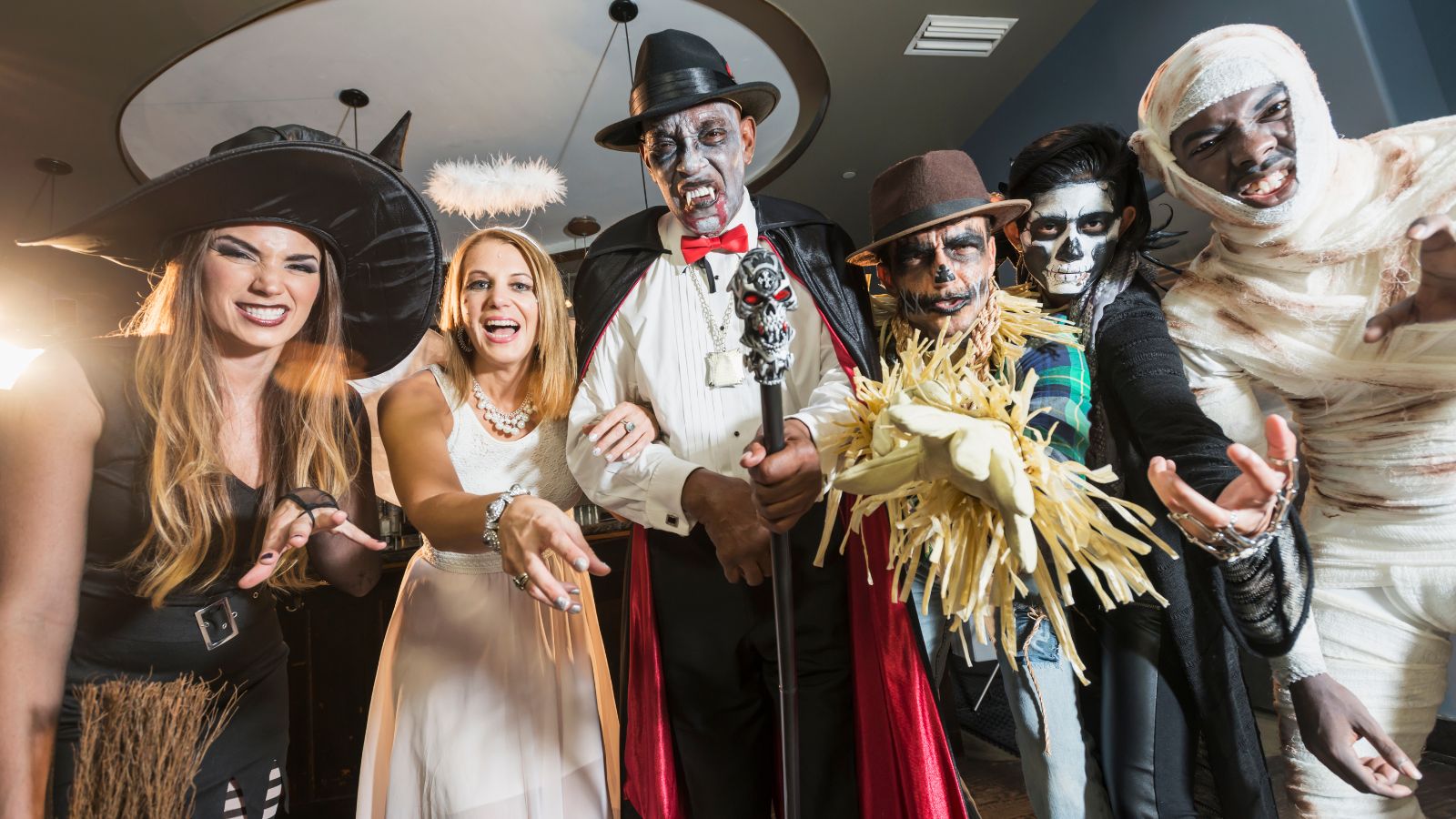From classic horror movie soundtracks to chilling chart-toppers, Halloween music has a unique ability to make our skin crawl and hearts race. In this article, we’ll dig into the crypt of Halloween music, unearthing its history, its impact, and why it’s a must-have for any fright night festivity.
So, ready to tune into the darker side of music? Let’s explore the haunted harmonies that make Halloween a chillingly unforgettable experience.
Halloween Music
Harnessing the ambiance of Halloween lies largely in selecting the right music. Halloween music spins a web of spookiness, suspense, and spectral fun, transforming ordinary spaces into realms of the supernatural. It’s integral to the All Hallows’ Eve celebrations, and for me, the exciting part is understanding why.
Dating back to the Pagan traditions in Europe, music has been associated with Halloween and its predecessor, Samhain. Then, it was believed music could ward off evil spirits, a principle that still holds in the thin veil of spookiness that Halloween music drapes over our modern celebrations. Today’s Halloween tunes range from ominous orchestral arrangements, like those from horror films like “The Shining,” to spine-chilling pop hits such as the ever-popular “Thriller” by Michael Jackson.
But let’s delve into its psychological impact. Studies, like the one in The Journal of Sonic Studies, cite that minor chords and slow tempos incite feelings of unease. Unpredictable notes and eerie sounds keep listeners on edge, creating a sense of trepidation synonymous with the Halloween ethos.
However, Halloween music isn’t solely about fearfulness. It’s a unique blend of horror and humour; a fusion that separates it from other horror-themed soundtracks. Songs like “Monster Mash” and “Ghostbusters” carry a light-hearted vibe, making us giggle as much as they make us gasp.

Evolution of Halloween Music
Delving into the evolution of Halloween music, it’s essential to understand its deep-rooted traditions. The iconic sounds that characterise modern Halloween music experienced noteworthy shifts due to technological advances, cultural influences, and changes in popular music genre preferences.
In the early 20th Century, Halloween music was primarily folk tunes and eerie sound effects played on physical instruments. These included the traditional Irish/Celtish melodies and the ominous sounds of church bells, primarily associated with warding off evil spirits in Pagan traditions.
In the 1920s and 1930s, horror-themed series on the radio, like the widely popular “The Witch’s Tale,” began incorporating atmospheric music, utilising sound effects to evoke an air of suspense and fear. These programs heavily influenced the development of Halloween’s musical landscape, creating the bridge between traditional folk customs and modern horror themes.
By the 1950s and 60s, Halloween music saw the incorporation of rock and roll and pop trends. Chart-hitting songs like “Monster Mash” by Bobby Pickett combined elements of fear and humour, creating the staple anthems for the holiday.

Distinctive Features of Halloween Music
Halloween music presents unique qualities that enrich this spooky holiday. Here, I’ll expound on these distinctive features. One of these is the pervasive use of minor keys. Unlike their major key counterparts, often associated with happiness and joy, minor keys prompt the listener to feel a sense of melancholy, mystery, or dread. Typical examples are Toccata and Fugue in D minor by Johann Sebastian Bach and In the Hall of the Mountain King by Edvard Grieg.
Sound effects also lend a vivid presence in Halloween tracks. Creaky doors, howling winds, and thunderclaps provide immediate context clues, triggering images of haunted houses and stormy nights. Think of The Monster Mash by Bobby Pickett, where the use of sound effects enhances the comedic horror theme.
Instrumentally, pipe organs are a staple of Halloween music. These instruments, known for their association with churches and cathedrals, create a soundscape that’s both grandiose and mysterious. Listen to the Phantom of the Opera theme by Andrew Lloyd Webber, and you’ll recognize the chilling effect of the organ.
Moreover, Halloween music often incorporates elements of notable music genres such as rock and pop, providing a dynamic, modern approach to the holiday classics. Examples include Somebody’s Watching Me by Rockwell and Thriller by Michael Jackson.

